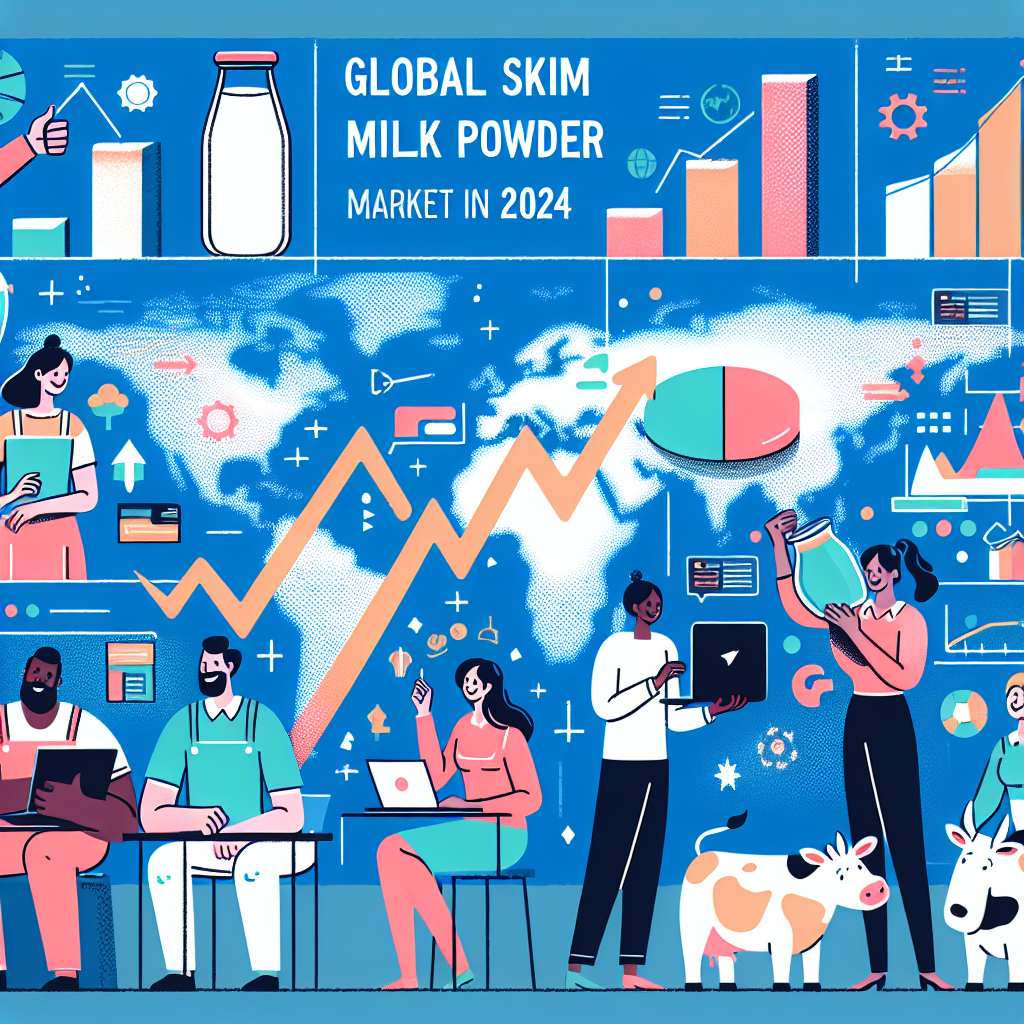Stay ahead with the latest dairy market trends and stats. Ready to elevate your dairy business?
Summary: The past week in the dairy industry has been characterized by robust trading and significant price movements across various futures markets. EEX saw a total of 5,930 tonnes traded, with notable activity in butter and SMP futures. Meanwhile, SGX futures witnessed an impressive 11,411 tonnes traded, spearheaded by WMP. European quotations and cheese indices continued their upward trends, marking the fourth and fifth consecutive positive weeks, respectively. Fonterra’s GDT Pulse Auction also saw substantial price hikes, while strategic volume adjustments were made ahead of GDT TE363. On the production front, milk collection data for July presents a mixed global outlook, with varying trends across key regions. European butter prices have risen by over 70% last year, indicating significant changes in the dairy market. Dairy producers must stay updated on market trends and data to make informed production, pricing, and investment decisions. The European Energy Exchange (EEX) has seen increased trading activity, with 5,930 tonnes of butter, 3,165 tonnes of skimmed milk powder (SMP), and 50 tonnes of whey moved last week. Butter futures on the EEX rose by 1.8% for the seventh week in a row, raising the average price to €7,535. SMP futures rose by 0.3%, bringing the average price to €2,683, and whey futures rose 7.0%, increasing the average cost to €975. SGX dairy futures experienced robust trading and price jumps, with Whole Milk Powder (WMP) leading the way. European quotes show a persistent increasing trajectory, making this the fourth consecutive positive week for all essential dairy products. Cheese indices show a sustained rising trend for important kinds, with the fifth consecutive week of advances. Stay informed and ahead of the curve with these market insights, ensuring your operations remain competitive and profitable in a dynamic global dairy market.
- Total traded volume on EEX last week was 5,930 tonnes, with significant activity in butter and SMP futures.
- SGX futures saw an impressive 11,411 tonnes traded, with Whole Milk Powder (WMP) showing the strongest performance.
- European quotations and cheese indices continued their upward trends, marking the fourth and fifth consecutive positive weeks, respectively.
- Fonterra’s GDT Pulse Auction experienced notable price hikes.
- Strategic volume adjustments were made by Fonterra ahead of GDT TE363.
- Mixed trends in global milk collection data for July, with variations across key regions.
- European butter prices have risen by over 70% compared to last year.
- Dairy producers should stay updated on market trends and data to make well-informed decisions.

Have you noticed the remarkable surge in European butter prices, which escalated by over 70% last year? This substantial shift in the dairy market underscores the pressing need for producers to stay abreast of market trends and data. Understanding these fluctuations is crucial for making informed production, pricing, and investment decisions. In the increasingly unpredictable global dairy market, having the correct information at your disposal could be the key to thriving rather than just surviving.
Surging Trades and Rising Prices: EEX Dairy Futures on the Move
The European Energy Exchange (EEX) has seen increased trading activity lately, with 5,930 tonnes (1,186 lots) moved last week. This comprised 2,225 tonnes of butter, 3,165 tonnes of skimmed milk powder (SMP), and 50 tonnes of whey. The trade volume peaked on Wednesday, with 3,080 tons changing hands.
Butter futures on the EEX rose for the seventh week in a row by 1.8%. This raised the average price during the Sep 24-Apr 25 period to €7,535, despite modest reductions in the October 24 and April 25 contracts. SMP futures, on the other hand, rose by 0.3%, bringing the average price to €2,683 over the same future strip. Meanwhile, whey futures rose 7.0%, increasing the average cost to €975.
SGX Dairy Futures: Robust Trading and Price Jumps
Last week, SGX activity fluctuated significantly. A total of 11,411 lots or tons were exchanged, with Whole Milk Powder (WMP) leading the way. WMP saw 9,126 lots change hands, cementing its status as a significant participant. The average price for WMP for the Sep 24-Apr25 curve rose 3.1% to $3,543.
Skimmed Milk Powder (SMP) also had an active trading week. With 1,960 lots traded, the average price rose 1.3% to $2,838. This upward trend suggests that SMP will continue to be in high demand in the future months.
Anhydrous Milk Fat (AMF) traded 200 lots, resulting in a 4.3% increase in the average price, currently $6,947, from September 24 to April 25. With a slightly smaller number of 125 lots exchanged, Butter saw the most significant relative price gain of 4.8%, hitting $6,661.
These patterns in the dairy futures traded on SGX paint a positive picture, fueled by sustained demand and favorable trading conditions. This optimistic market sentiment should reassure dairy producers about the current market conditions.
European Quotations Show Steady Rise: Fourth Consecutive Positive Week for Key Dairy Products
Recent trends in European quotes have shown a persistent increasing trajectory, making this the fourth straight positive week for all essential dairy products. Butter prices have risen by 2.7%, and the index is currently at €7,600. German butter had the biggest gain, up 4.7% to €7,800. This is a considerable increase of 72.5% above last year’s average butter price of €3,193.
Skimmed Milk Powder (SMP) has also seen consistent improvements, with a 1.2% rise taking the index to €2,467. German SMP witnessed the most increase, jumping by 3.1% to €2,515. SMP prices have risen by 11.9% yearly, averaging €262 more than the previous year.
The whey market has performed exceptionally well, with the index rising 6.7% to €728. Dutch and German whey prices increased by 10.8% and 9.2%, respectively. Whey prices are up 28.4% from a year earlier, showing a solid demand spike.
Whole Milk Powder (WMP) has also performed well, up 3.6% to €4,148. Dutch WMP had the most significant increase at 4.9%, hitting €4,280. Overall, WMP costs are 23.7% more than last year, with the average price increasing by €795.
The European dairy industry is experiencing considerable price hikes, indicating more robust demand and tighter supply conditions than last year.
European Cheese Indices: Consistent Gains Over Five Weeks
Cheese indices show a sustained rising trend for important kinds, with the fifth consecutive week of advances. Cheddar Curd rose by €154 (+3.5%) last week to €4,590 and is now €826 (+21.9%) higher than last year. Mild Cheddar followed suit, rising €89 (+2.0%) to €4,555, representing a €719 (+18.7%) year-over-year rise.
Young Gouda also excelled, rising €204 (+5.0%) to €4,325, exceeding last year’s levels by €891 (+25.9%). Finally, Mozzarella substantially increased, rising €176 (+4.2%) to €4,366, now €999 (+29.7%) higher than the previous year. These indexes point to a positive market attitude and optimistic prospects for European cheese variants.
GDT Pulse Auction (PA059) Sees Notable Price Hikes and Vibrant Trading Activity
The last GDT Pulse Auction (PA059) showed a considerable increase in pricing and engagement. The average winning price for Fonterra Regular C2 WMP was $3,560, up $50 (+1.7%) from the previous GDT auction and $300 (+9.2%) from the prior pulse sale. Fonterra SMP Medium Heat – NZ likewise saw an increase, hitting $2,670, up $70 (+2.7%) from the previous GDT auction and $120 (+4.7%) above the last price pulse. Participants showed strong interest, with 51 bids vs 49 in the last pulse, acquiring 1,972 tons across all items. This somewhat diminishes the previous pulse auction’s 2,000 tons sold while demonstrating robust and sustained market involvement.
Fonterra’s Strategic Volume Adjustments Ahead of GDT TE363: Key Reductions and Steady Forecasts
Fonterra recently issued its volume projection for the next GDT TE363 event, which included some significant changes. The most noteworthy adjustment is a drop of 1,500 tonnes of Whole Milk Powder (WMP), lowering the overall 12-month volume to 349,753 tonnes. This drop reflects market demand and demonstrates Fonterra’s response to current trends.
Meanwhile, the predicted quantities for Skim Milk Powder (SMP) remain steady, representing an 18.7% increase over the August event, with 9,450 tons available this week. Similarly, cream group quantities remain unaltered in the forecast and prior event, with a maximum of 5,935 tonnes, which aligns with 12-month predictions of 99,895 tonnes.
Eight hundred forty tons of Cheddar will be available, showing Fonterra’s thorough rephrasing to fit market demands better. Fonterra’s strategic modifications to product levels for TE363 attempt to optimize supply in response to observed market dynamics and expected demand.
Mixed Signals: Global Overview of July Milk Production Data
The most recent milk production figures from several nations show a mixed picture of increases and decreases yearly. Let us start with Poland. StatPoland stated that milk output in July was 1.13 million tons, a 0.9% rise yearly. Cumulative output for 2024 is 8.04 million tons, up 3.7% yearly. The raw milk price in July was €45.55/100kg, representing a 4.0% increase year over year.
In the Netherlands, milk collections for July were recorded as 1.15 million tons, a 3.1% decrease from the previous year. In 2024, cumulative collections were 8.19 million tons, a 1.6% decrease from the previous year. Milkfat content increased slightly to 4.30%, compared to 4.29% last year.
Milk output in the United Kingdom fell 0.1% year on year in July, exceeding expectations of a 0.3% drop. Cumulative output was 9.23 million tons, a 0.1% decrease yearly. The milkfat concentration was lower at 4.10%, compared to 4.14% last year. Farmgate milk prices increased by 10.7% yearly, reaching 39.48 pence per liter.
In New Zealand, Fonterra reported July milk collections of 20.6 million kgMS, a 9.0% increase yearly. Season-to-date receipts were 35 million kgMS, up 4.1% from the previous season. North Island collections increased 10.3% yearly to 18.9 million kgMS, while South Island collections decreased by 3.6% yearly to 1.7 million kgMS.
The Bottom Line
The most recent statistics from EEX and SGX futures highlight dairy commodities’ volatile but promising picture. The market demonstrates durability and development potential as butter and SMP futures on EEX rise. In contrast, European quotes and cheese indices rise steadily. The variable milk production data from Poland, the Netherlands, the United Kingdom, and Fonterra provide a nuanced perspective that deserves careful consideration.
Dairy producers must keep up with current market movements. Understanding future pricing and production levels helps them make educated choices that optimize their operations and increase profitability. This market knowledge may significantly impact modifying manufacturing tactics or planning future investments.
Are you ensuring your farm’s strategy matches these market realities? Stay proactive and informed, and drive your operations to success.
Learn more:
- Why 80% of U.S. Dairy Farms Are Struggling: An Insider’s Look at the Unseen Challenges
- Global Dairy Trade: Key Insights Every Dairy Farmer Should Know
- Unveiling the USDA Milk Report: Find Out Which States are Leading and Lagging!
 Join the Revolution!
Join the Revolution!
Bullvine Daily is your essential e-zine for staying ahead in the dairy industry. With over 30,000 subscribers, we bring you the week’s top news, helping you manage tasks efficiently. Stay informed about milk production, tech adoption, and more, so you can concentrate on your dairy operations.







 Join the Revolution!
Join the Revolution!








 Held yearly in Madison, Wisconsin, the World Dairy Expo is the main event for those who like dairy products and attracts a varied worldwide attendance. Set for October 1–5, 2024, this five-day event turns the Alliant Energy Center into a hive of dairy innovation and legacy.
Held yearly in Madison, Wisconsin, the World Dairy Expo is the main event for those who like dairy products and attracts a varied worldwide attendance. Set for October 1–5, 2024, this five-day event turns the Alliant Energy Center into a hive of dairy innovation and legacy.




 The World Dairy Expo 2024 isn’t just a showcase of dairy excellence; it’s also a launchpad for the latest efforts in sustainability and innovation within the industry. These themes resonate throughout the event, emphasizing their critical role in shaping the future of dairy farming.
The World Dairy Expo 2024 isn’t just a showcase of dairy excellence; it’s also a launchpad for the latest efforts in sustainability and innovation within the industry. These themes resonate throughout the event, emphasizing their critical role in shaping the future of dairy farming. 

 The World Dairy Expo is a pinnacle event for anyone passionate about dairy. There’s something for everyone, from the sprawling trade show and top-tier cattle showcases to many networking opportunities and educational sessions. The Expo brings together the best in the industry and provides a platform for learning, connecting, and innovating.
The World Dairy Expo is a pinnacle event for anyone passionate about dairy. There’s something for everyone, from the sprawling trade show and top-tier cattle showcases to many networking opportunities and educational sessions. The Expo brings together the best in the industry and provides a platform for learning, connecting, and innovating. 



